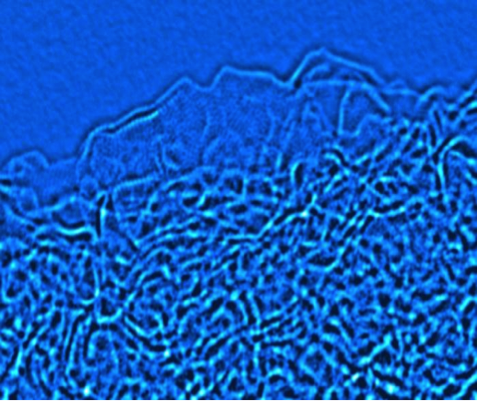 Many people can relate to the hardship of starting a vehicle during a bitter cold morning before work. It takes a huge amount of power relative to a warm sunny day for two reasons: the mechanical parts of an engine require more power to start moving when cold (motor oil becomes viscous, like honey), and the battery operates at a very low efficiency because the ions in electrolyte solution move much slower at freezing temperatures.
Many people can relate to the hardship of starting a vehicle during a bitter cold morning before work. It takes a huge amount of power relative to a warm sunny day for two reasons: the mechanical parts of an engine require more power to start moving when cold (motor oil becomes viscous, like honey), and the battery operates at a very low efficiency because the ions in electrolyte solution move much slower at freezing temperatures.
A collaboration between researchers at Drexel University in Philadelphia, The University of Texas at Austin, and Paul Sabatier University in Toulousse, France have recently engineered a supercapacitor system that can operate efficiently at very low temperatures – as low as -50 °C (-58 °F). Just published in the journal Nano Energy, their work involves a unique nanostructured carbon material deemed activated microwave exfoliated graphite oxide (“a-MEGO”), which was inspired by the recent interest in graphene. Graphene, which is an atomically thin layer of carbon, has many applications in energy storage and generation.
Combined with a-MEGO is an electrolyte called an ionic liquid. These are salts like sodium chloride, but are liquid at room temperature or below. The a-MEGO material has a high surface area, with about 2 grams having the surface area of a football field; as a result, a-MEGO is able to store a large amount of charge on its surface as a supercapacitor. The unique electrolyte, which is a mixture of ionic liquids, allows for operation at low temperature. Commercial supercapacitors, by comparison, use an electrolyte that will fail at temperatures below -25 °C (-13 °F). Finally, supercapacitors will last for more than 10 years and up to 1 million charge/discharge cycles, compared to batteries that will last a couple years for about 1 thousand cycles. Imagine never having to change your car battery!
This study reinforces the potential of graphene in energy storage applications, but also demonstrates that only the right combination of an electrode material and an electrolyte leads to truly outstanding performance. This opens the door to development of even better supercapacitors using safe and non-flammable ionic liquid electrolytes.
Citation: Lin, R.; Tsai, W.- Y.; Murali, S.; Zhang, L. L.; McDonough, J. K.; Ruoff, R. S.; Taberna, P.- L.; Gogotsi, Y.; and Simon, P. Outstanding Performance of Activated Graphene Based Supercapacitors in Ionic Liquid Electrolyte from -50 to 80°C. Nano Energy, 2013, doi 10.1016/j.nanoen.2012.11.006
Take Away
What? – Engineered a material / electrolyte supercapacitor system to store a large amount of energy at extremely low temperatures. Additionally, the system has a fast response rate and a high efficiency compared to batteries.
When? – First published online (Nano Energy).
Where? Collaboration between UTexas at Austin, Paul Sabatier University in Toulousse France, and Drexel University in Philadelphia.
Why? Present systems to power technology at very low temperatures, i.e. starting a vehicle in an Alaskan morning, require oversized batteries that have a very low efficiency and short lifetime. Our supercapacitor system delivers the most energy at a low temperature of -50 °C (-58 °F) and can operate for ~1 million charge / discharge cycles.
How? A unique carbon nanomaterial, activated microwave exfoliated graphite oxide (a-MEGO), was combined with a eutectic mixture of ionic liquids. The a-MEGO has a high surface area and allows for a large amount of charge to be stored capacitively on its surface, while the mixture of ionic liquids has a very low melting point and a wide voltage stability window.
Pictured above: Transmission electron image of a-MEGO. Individual layers of carbon called graphene can be seen. Image taken by Dr. Eric Stach of Brookhaven National Lab